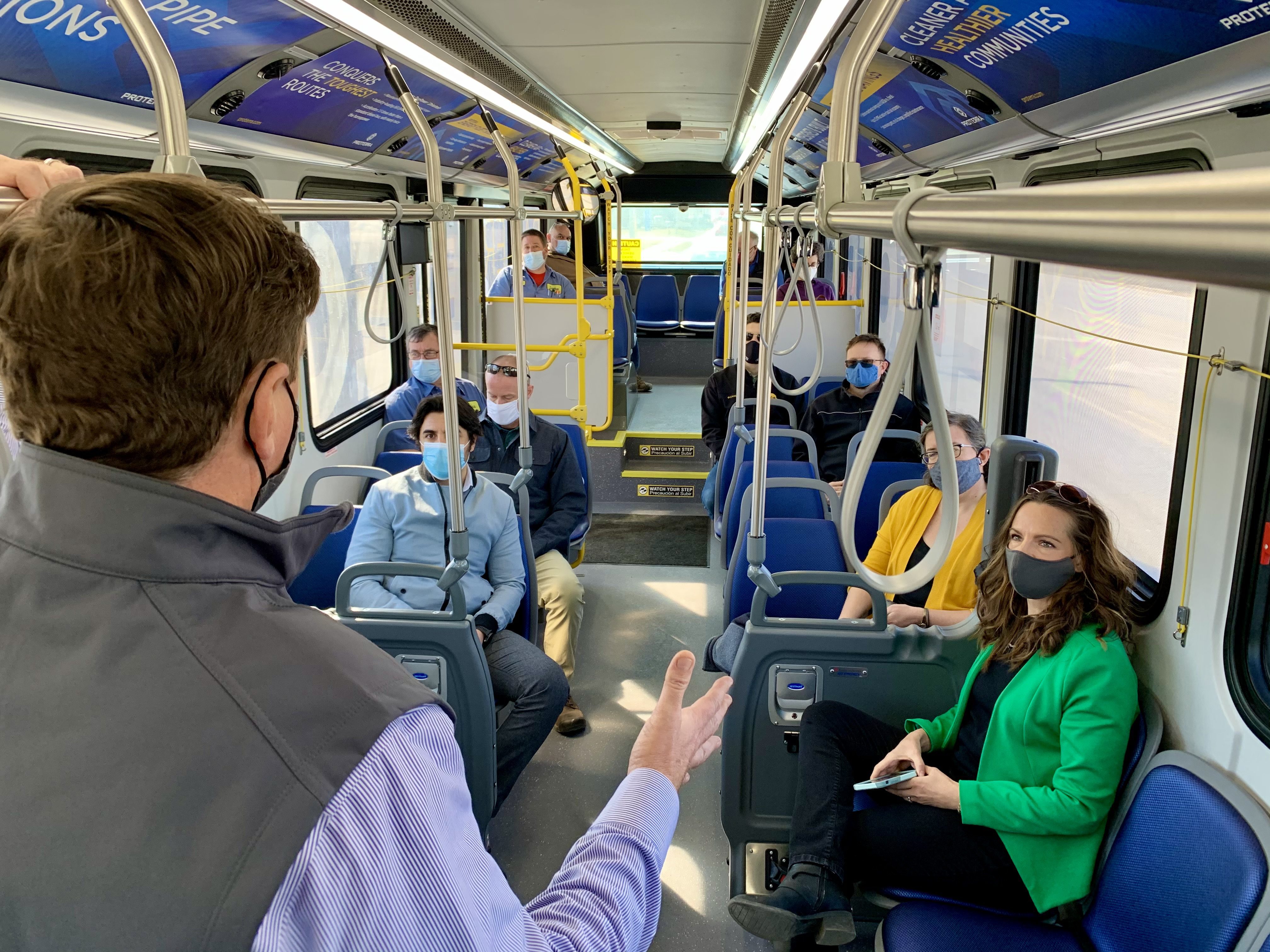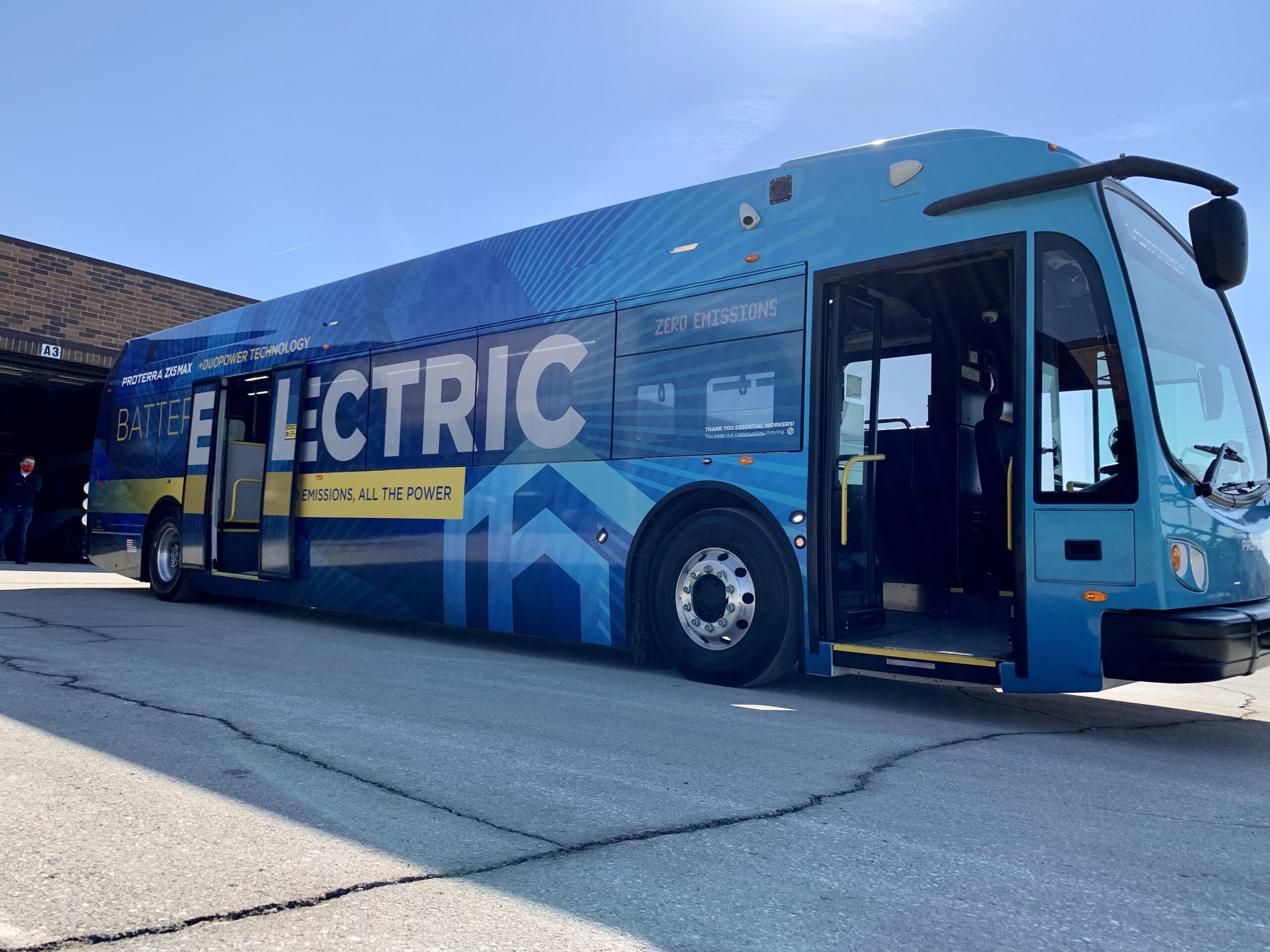
Like many U.S. cities, the Iowa capital of Des Moines considers electric vehicles (EVs) to be a key element of its plan to reduce greenhouse gas emissions and lower its carbon footprint. City council members recently reviewed proposals to build the city’s first two public electric car charging stations, and in December the Des Moines Area Regional Transit (DART) began operating its first electric buses.
DART started testing seven electric buses as part of a pilot project made possible through a public-private partnership with MidAmerican Energy. MidAmerican agreed to provide local matching funds for DART’s low- or no-emission grant application with the Federal Transit Administration (FTA).
The buses were manufactured by Proterra, a Silicon Valley EV technology firm. They have an estimated travel range of 150 to 230 miles per single charge. Each one is expected to save about 230,000 pounds of greenhouse gases per year.
“As excited as we are for riders to experience the difference, everyone will benefit from the introduction of electric buses,” said DART CEO Elizabeth Presutti. “Those who walk, bike, and travel along our streets will enjoy cleaner air, quieter surroundings, and a healthier environment.”

Des Moines has earned kudos nationwide for its ambitious clean-energy program. In January, the city council unanimously passed a resolution that sets a timeline for several milestones in the shift from fossil fuels to renewable energy sources, including wind and solar power. As noted on the Elektrek website, the city intends to be fully powered by 100 percent clean energy by 2035; reduce its emissions by 45 percent between 2010 and 2030, and achieve net-zero emissions by 2050.
Such initiatives are likely to become more commonplace as cities and states look to meet new environmental goals set forth by federal lawmakers. One of those goals, included in December’s $900 billion coronavirus bill, is to curb emissions from diesel engines.
President Joe Biden has made no secret of his desire to see the U.S. make a bigger move toward electric vehicles. To help accommodate the expected rise in the number of EVs, Biden pledged to build 500,000 new electric car chargers over the next decade, with the aim of reducing emissions from highways.
Biden also signed an executive order in January requiring the replacement of the entire fleet of federal vehicles with U.S-built electric cars, vans, and trucks. That’s no small task – the current fleet numbers about 645,000 vehicles nationwide.
Back in Des Moines, DART will spend this year closely monitoring and evaluating how its new electric buses perform both individually and compared with their diesel counterparts. To help gauge the fleet’s overall performance and long-term financial savings, DART will monitor the following performance metrics:
- Range: How far the buses travel on a full charge
- Downtime: How long a bus is not operational due to maintenance
- Preventative maintenance cost: How electric buses compare with diesel buses in terms of upkeep and parts replacement
- Energy expense: How much it costs to charge the buses up
- Wear and tear on carbon fiber composite body: How the body of electric buses compares with normal buses in terms of rust and corrosion





